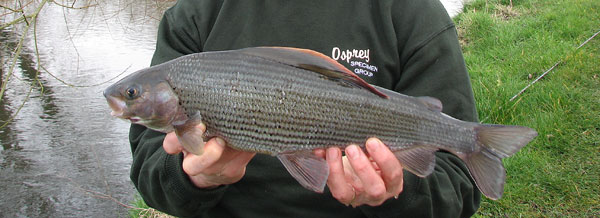Source: S&TA
Salmon and Trout Association (S&TA) and Hampshire and Isle of Wight Wildlife Trust (HIWWT) welcome the Environment Agency’s (EA) decision to issue revised permits covering discharges from watercress farms on the River Itchen. This is a vital first step towards cutting the levels of phosphate pollution in the River Itchen, which significantly impacts both the condition of the river and the wildlife habitats it provides. [1]
Excess phosphate in the river acts as a fertiliser, encouraging unnaturally vigorous growth of both suspended algae, which discolours the water, and denser algae that smothers the riverbed and strangles aquatic weeds. This alters the unique ecosystems within the river, affecting everything from plants, such as water crowfoot, aquatic insects and fish, including the nationally renowned grayling, trout, roach and salmon populations. All of this damage is despite the Itchen enjoying the highest possible protection under European environmental law – the site is designated a Special Area of Conservation under the EU Habitats Directive.
S&TA and HIWWT have worked together to drive action to restore the Itchen to its former pristine status. With both organisations’ wide-ranging relationships with river owners and other supporters, they have been able to get key players to take this issue seriously and take action to do something about it. Thanks to funds from individuals and corporate sponsors such as Orvis Ltd., they have also installed five water samplers to test phosphate levels in the main river and tributaries, with independent analysis undertaken by Southampton University.

Paul Knight, S&TA’s CEO, declared:
“We are delighted that phosphates are at last being controlled in the river, although it is extremely frustrating that this has taken so long, with the Itchen all the while being allowed to deteriorate in water quality. A great deal still needs to be done to bring the Itchen back to its former glory days, but this is an encouraging start. S&TA and our colleagues in HIWWT will continue to monitor progress on the Itchen, and lobby intensively at both local and national level for the required political commitment to protect all UK rivers from an increasing demand for commercial exploitation of our water resources. In particular, we are demanding that all abstracted water should be returned to the river in no worse state than it was received, and this is especially relevant to commercial activities such as watercress farming.”
Debbie Tann, HIWWT’s CEO, said:
“We are hugely encouraged that the EA has at last taken a grip of the phosphate issue. We are particularly pleased that the two largest watercress companies, Vitacress Salads and the Watercress Company, are taking this issue seriously, with Vitacress announcing that it will not only operate within the new standards, but will re-engineer its cress beds to dramatically reduce the amount of Phosphorus discharged into the river by January, 2016. We also understand that the Watercress Company has agreed a similar target, aiming to comply later in 2016. Although we feel that these timescales could be shorter, we look forward to working with the companies and the EA to ensure that all the improvements on the Itchen are made as soon as possible.”
Meanwhile, S&TA will continue its independent monitoring of the river and tributaries on a daily basis to record progress made in cleaning up the Itchen’s water quality, coordinating this work with HIWWT and Southampton University, and making results known to the EA, which only monitors the river once a month. Meanwhile, S&TA and HIWWT have plans to continue their highly effective partnership to tackle other issues impacting the chalk streams, of which England hosts a staggering 85% of the entire global resource.
[1] Following the Environment Agency’s consultation on discharge standards for watercress farms, revised permits were issued finally issued on 30 April. The principle issues with the permits are as follows:
The phosphate (P) standard varies between farms, but has an average of 0.051mgs/l (range between 0.040 and 0.064) Total Reactive Phosphorous. This is a differential allowed between abstracted and discharged water.
The permits state that Improvement Plans must be agreed with the EA within 4 months (31 August) as to how the companies will achieve full compliance.










